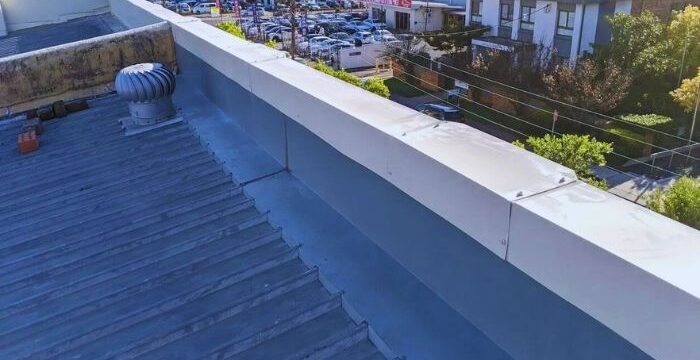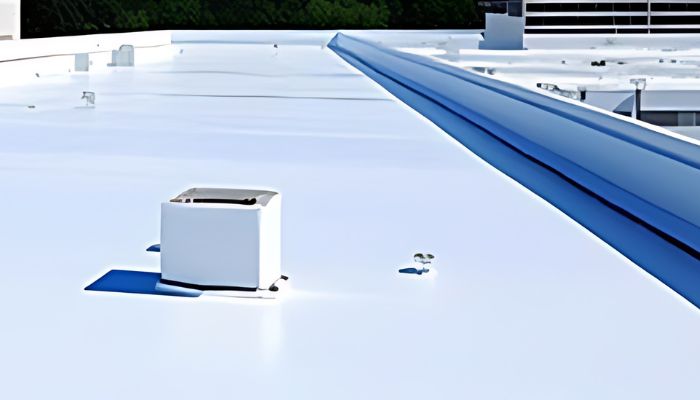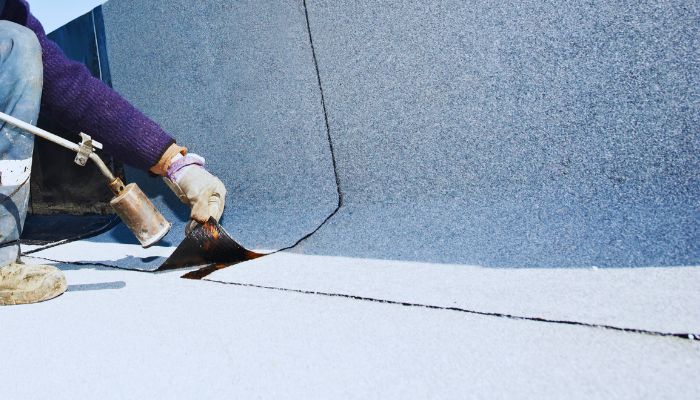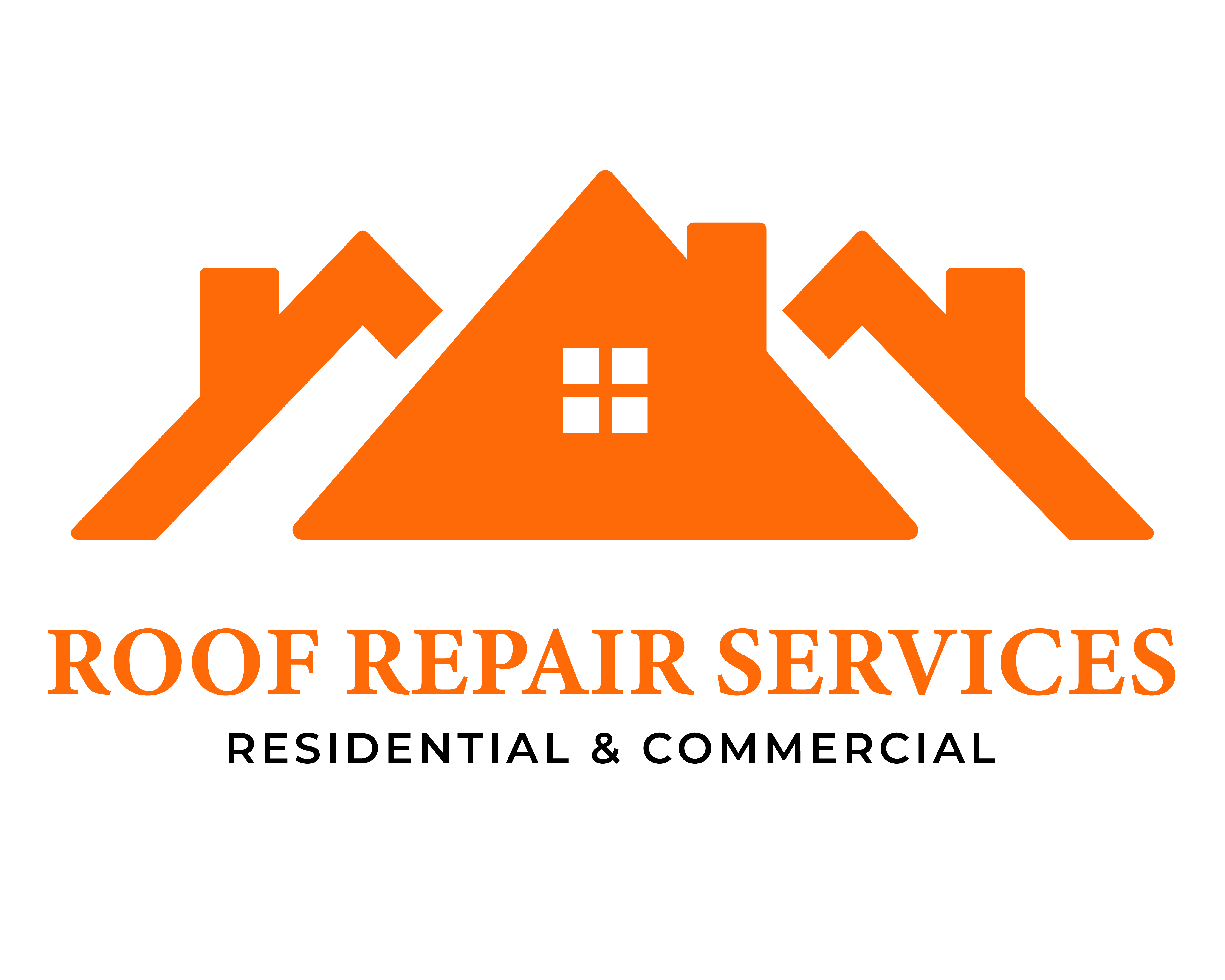Understanding Parapets and Their Types - Roof Repair Services
- Home
- Understanding Parapets and Their Types
Car Repairing

- August 8, 2024
- By: roofrepair_admin
- General
- Comments: 0
Parapet walls are a crucial architectural feature found on many buildings, providing both functional and aesthetic benefits. A curved parapet wall is particularly beneficial for both flat and sloped roofs, adding height to smaller buildings and complementing various roofing styles with its aesthetic appeal and functionality. Historically, they were primarily used for defense, especially in castles where embattled parapets allowed defenders to shoot arrows while being protected. In modern architecture, parapet walls serve various purposes, from safety and protection to enhancing the building’s aesthetic appearance. Understanding their types is essential for architects, builders, and property owners to make informed decisions about their use and maintenance.
What’s a Parapet?
A parapet is a vertical extension of the exterior wall of a building, usually above the roof line. It serves multiple functions, including providing safety, hiding mechanical equipment, and adding decorative elements to the building’s facade. Parapet walls, especially flat parapet walls, can be found on both residential and commercial buildings with flat roofs. These flat parapet walls typically exhibit little to no slope, making them essential for protecting the roof’s edge and enhancing safety in various architectural designs. Their design can vary widely based on the building’s architectural style and functional requirements.
- Definition and Scope: Parapet walls are typically the extended wall portion that rises above the roof’s edge. They are commonly used on flat roofs to provide a barrier at the roof’s edge, preventing falls and providing a base for other features like guard rails and railings.
- Historical Background: Historically, parapets were integral to defensive structures such as castles and fortifications. The classic embattled parapet walls, with their alternating high and low sections (battlements), allowed defenders to protect themselves while shooting arrows or other projectiles.
Types of Parapet Walls: An Overview of Different Styles
Parapet walls come in various designs, each serving different purposes and offering unique aesthetic and functional benefits. Here are some common types of plain parapet wall and walls:
- Plain Parapet Walls
- Description: These are the most basic type of parapet walls, with a straightforward, flat design. They are often found on both residential and commercial buildings.
- Applications: Plain parapet walls provide a simple and clean look, suitable for buildings with minimalist architectural styles. They are functional, offering safety and a base for guard rails.
- Benefits: Easy to construct and maintain, plain parapet walls are cost-effective and versatile.
- Embattled Parapet Walls
- Description: These parapet walls feature a distinctive design with alternating high and low sections, reminiscent of castle parapet walls.
- Applications: Commonly found on historical buildings and structures with a medieval aesthetic, embattled parapets add a touch of historical significance.
- Benefits: Apart from their decorative appeal, embattled parapets can also serve as functional battlements in historical reconstructions.
- Paneled Parapet Walls
- Description: Paneled parapet walls are characterized by decorative panels that add texture and visual interest to the wall.
- Applications: Suitable for buildings where aesthetics are a priority, paneled parapet walls enhance the facade’s visual appeal.
- Benefits: These walls provide an opportunity for creative design, adding to the building’s curb appeal.
- Perforated Parapet Walls
- Description: Perforated parapet walls are a vertical extension over a slab, featuring decorative perforations that enhance their aesthetic appeal and functionality. These perforations can vary in design and pattern based on the building’s theme.
- Applications: Particularly suitable for historical and religious structures, perforated parapet walls allow people, including children, to sit and look through them, adding both beauty and utility.
- Benefits: They help reduce wind loads and improve airflow, making them suitable for specific architectural needs while also enhancing the building’s visual appeal.
- Stepped Parapet Walls
- Description: These walls feature a stepped design, where the height of the parapet increases or decreases in steps.
- Applications: Stepped parapet walls are often used in buildings with varying roof heights or where a unique design element is desired.
- Benefits: The stepped design can help manage water runoff and add a dynamic look to the building’s profile.
- Curved Parapet Walls
- Description: Curved parapet walls follow a smooth, curved line rather than a straight edge.
- Applications: These are often used in modern buildings to create a sleek, contemporary look.
- Benefits: Curved parapets soften the lines of a building and can be visually striking, enhancing the overall aesthetic appeal.
- Flat Parapet Walls
- Description: Flat parapet walls are characterized by a flat, level top surface.
- Applications: Commonly used on flat roofs, these walls are simple and functional.
- Benefits: They provide a straightforward solution for safety and roof edge protection, often integrating easily with other roof features.
- Sloped Parapet Walls
- Description: Sloped parapet walls are designed with an incline, usually to follow the slope of a roof.
- Applications: Suitable for buildings with sloped roofs, these walls ensure continuity in design and function.
- Benefits: They help manage water runoff and maintain the roof’s aesthetic and functional integrity.

Purposes and Benefits of Parapet Walls
Parapet walls serve several important purposes in building design and construction:
- Safety and Protection: One of the primary functions of parapet walls is to provide safety by preventing falls from the roof. This is especially important on flat roofs where the roof edge might be a hazard.
- Aesthetic Appeal: Parapet walls enhance the aesthetic appearance of buildings. They can be designed to complement the architectural style of the building, adding visual interest and character.
- Weather Protection: Parapet walls help protect the roof structure from weather elements. They act as a barrier against wind-driven rain and snow, reducing the risk of water penetration and damage. A sloped parapet wall is particularly effective for sloped roof structures, as it helps manage water runoff and protects the integrity of the roofing system.
- Fire Safety: In some cases, parapet walls can act as fire barriers, preventing the spread of fire from one building to another. This is particularly important in densely built urban areas.
- Hiding Rooftop Equipment: Parapet walls can conceal rooftop equipment such as HVAC systems, electrical wiring, and other mechanical installations, contributing to a cleaner and more organized roofline.
- Reducing Wind Loads: By acting as a windbreak, parapet walls help reduce the wind loads on a building, which can be particularly beneficial in areas prone to high winds.
- Supporting Additional Features: Parapet walls provide a base for additional architectural features such as guard rails, railings, and decorative elements.
Building Parapet Walls
Building parapet walls requires careful consideration of materials and structural integrity. Common materials used include reinforced cement concrete, brick, stone, and metal. The choice of material often depends on the building’s design, the desired aesthetic, and the functional requirements of plain parapets.
- Reinforced Cement Concrete: This material is strong and durable, making it suitable for high wind loads and heavy parapet walls.
- Brick and Stone: These traditional materials offer a classic look and are often used in historical or decorative parapet walls.
- Metal: Metal parapet walls are lightweight and can be designed with various finishes to match the building’s aesthetic types of parapet walls.
Materials Used for Building Parapet Walls
The construction of parapet walls requires a careful selection of materials to ensure durability, functionality, and aesthetic appeal. Understanding the materials used in different types of parapet walls can help in choosing the right one for your building project.
- Reinforced Cement Concrete (RCC): This material is widely used for its strength and durability. RCC parapet walls can withstand high wind loads and provide solid support for additional features like guard rails and railings. They are particularly suitable for modern parapet walls in commercial and industrial buildings.
- Brick and Masonry Walls: Traditional materials like brick and stone offer a classic look and are commonly used in plain parapet walls and decorative parapet walls. These materials are durable and provide a solid barrier against weather elements. They are often used in residential buildings and historical restorations.
- Metal: Metal parapet walls are lightweight and versatile, making them ideal for modern buildings. They can be designed with various finishes to match the building’s aesthetic. Metal is also used in perforated parapet walls to provide ventilation and reduce wind loads.
- Stone: Stone parapet walls are not only durable but also add a touch of elegance and timeless appeal to buildings. They are often used in high-end residential and commercial buildings, especially in curved parapet walls and arched parapet walls.

Maintenance of Parapet Walls
Regular maintenance of parapet walls is essential to ensure their longevity and functionality. Here are some key aspects of maintaining different types of parapet walls:
- Regular Inspections: Conduct regular inspections to identify any signs of damage or wear. Look for cracks, loose mortar, and signs of water penetration. Early detection of issues can prevent extensive damage and costly repairs.
- Cleaning and Debris Removal: Keep the parapet wall clean by removing debris, moss, and other growths that can trap moisture and lead to deterioration. This is particularly important for flat parapet walls and sloped parapet walls, where debris can accumulate more easily.
- Repairing Cracks and Sealing Joints: Use appropriate materials to repair any cracks or gaps in the parapet wall. Sealing joints and applying protective coatings can help prevent water penetration and improve the wall’s durability.
- Ensuring Proper Drainage: Ensure that the parapet wall has proper drainage to prevent water buildup, which can cause structural damage. This is especially important for flat roofs and flat parapet walls.
- Checking Wall Coping and Concrete Coping: Inspect the wall coping and concrete coping for any signs of damage or wear. These elements protect the parapet wall from water infiltration and need to be in good condition.
- Addressing Structural Issues: If the parapet wall is part of a larger structural system, such as a trussed structure or a sloped roof structure, ensure that any structural issues are addressed promptly. This includes checking for integrity in the masonry wall and reinforced concrete elements.
Parapets in Modern Architecture
Parapet walls have evolved significantly from their historical origins and are now integral to modern architecture. Understanding parapets roof types can help in leveraging their benefits in contemporary building designs.
- Aesthetic Enhancements: Modern parapet walls can be designed to enhance the building’s aesthetic appearance. Paneled parapet walls, perforated parapet walls, and decorative parapet walls add visual interest and character to the building facade.
- Functional Applications: In commercial and industrial buildings, parapet walls provide functional benefits such as hiding mechanical equipment and electrical wiring. They help in concealing rooftop equipment, contributing to a cleaner and more organized roofline.
- Energy Efficiency: Parapet walls can contribute to energy efficiency by reducing wind loads and providing insulation. This is particularly beneficial in buildings with flat roofs and sloped roofs where managing environmental factors is crucial.
- Safety Features: In modern buildings, parapet walls are essential for safety, especially on flat roofs. They prevent falls and provide a base for guard rails and steel railings. This is crucial in both residential and commercial buildings.
- Integration with Green Roofs: Parapet walls are often used in conjunction with green roofs and rooftop gardens. They provide the necessary barrier to contain soil and plants while ensuring the roof’s edge is safe and secure.
Hiring a Professional for Parapet Maintenance and Repair
Engaging a professional contractor for the maintenance and repair of parapet walls ensures that the work is done correctly and efficiently. Here are some tips for hiring a reputable contractor embattled parapet wall:
- Credentials and Experience: Look for contractors with experience in building parapet walls and maintaining various types of parapet walls. Check their credentials and ask for references from previous projects.
- Inspection and Maintenance Plans: A professional contractor should provide regular inspection and maintenance plans tailored to your building’s needs. This includes scheduled checks and preventative maintenance to avoid costly repairs.
- Warranties and Guarantees: Ensure that the contractor offers warranties and guarantees on their work. This provides assurance that any issues arising after the maintenance or repair will be addressed promptly.
- Compliance with Building Codes: The contractor should be knowledgeable about local building codes and regulations. This ensures that all work is compliant and meets the necessary safety standards.
- Use of Quality Materials: Ensure that the contractor uses high-quality materials for repairs and maintenance. This is essential for the longevity and performance of the parapet walls.
Conclusion
Understanding parapets is crucial for leveraging their benefits in modern architecture. From providing safety and protection to enhancing aesthetic appeal, parapet walls are a versatile and essential element in building design. Regular maintenance and proper material selection ensure that parapet walls remain functional and durable. Engaging professional contractors for inspections and repairs ensures that parapet walls perform optimally and contribute to the building’s overall integrity and appearance.
In modern architecture, parapet walls continue to evolve, offering both practical and aesthetic benefits. Whether you are working on a new building project or maintaining the exterior walls of an existing structure, understanding the various types of parapet walls and their maintenance requirements is essential for achieving long-lasting results and enhancing the value of your property.
